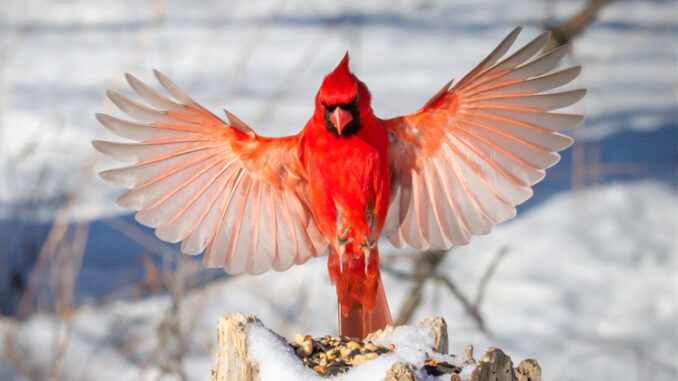
In the winter, it can be hard to see animals because it is cold outside. But some animals you might be able to spot, even in your backyard, are birds. Birds live in many different places. Some birds fly away when the weather starts to get too cold for them. This is called winter migration. Birds migrate to warmer climates to find food and safe shelter. They are not equipped to survive in the cold weather. Other birds do not migrate. They stick around and brave the winter season. Winter birds have developed adaptations that make them resilient to winter weather. In late fall, winter birds eat as much food as they can to add fat to their bodies. They also grow lots of new, fluffy feathers in the winter. Their down feathers are waterproof, which keeps their bodies dry.
Winter birds have behavioral adaptations, as well, that protect them from the struggles of winter. Smaller birds, like swallows, cuddle together on tree branches to keep each other warm. This is called roosting. Winter birds roost in large flocks to share body heat. Almost all birds shiver. Shivering is important. It helps keep the body from freezing. Winter birds use their feathers and extra fat to create insulation. They fluff up their feathers and create their own little air pockets in between them. The air in the pockets warms up and the birds are wrapped in a blanket of heat. Winter birds must eat a lot of fat-rich food to continue to generate the necessary heat to keep them warm. Finding shelter in the winter can be a challenge for winter birds. Cardinals spend their nights roosting in shrubs or dense evergreen trees. Other winter birds find shelter in tree cavities, keeping them warm and safe from predators.
What Can You Do? You can make the winter easier for birds in your area. Find out what nuts and seeds are rich in fat. Put them out for the birds in your neighborhood.
Photo Credit: Phil Lowe/Shutterstock



